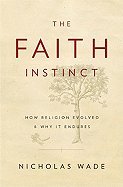What do you think?
Rate this book


Unknown Binding
First published January 1, 2009
1. Music/dance
2. Rites of passage
3. A way to communicate with the supernatural/divine and to influence its/their behavior
4. An afterlife (of some sort)
5. God(s) control(s) events
1. The whole community participated. There was no priestly caste, though there may have been shamans with special abilities re contacting the gods/spirit world.
2. The focus of worship was on communal activities. The modern idea of a personal relationship to God would have been foreign; there was no private spirituality (at least none that could be expressed or mattered to the community).
3. Sacred narratives (myths) conveyed both moral and practical lessons to their hearers.
4. There was also a focus on practical matters of survival over modern concerns of theology/dogma. It is perhaps ironic that religion’s strength – its survivability – lies more in the arbitrary rituals that create the “in” group than in the dogmas that priests devise.
As other ethnic groups went through the WASP school system, they assimilated the same values, particularly the Protestant art of forming associations of all kinds. But the balance between individualism and community-building has shifted dramatically toward the former in the last fifty years .... Groups demanding rights for specific sections of the population have also undermined community in unintended ways. (p. 202)
The Church felt secure in the 1950s and did not oppose the legal secularists until too late. Legal secularism was not addressed to the electorate, which would doubtless have rejected it flat, just to the Supreme Court, an elite group .... Some 95 percent of Americans are Christian or belong to no religion. Minorities--including Jews, Buddhists, Muslims and Hindus, together make up less than 5 percent. To protect the rights of a 5 percent minority by denying religious education to 95 percent of the population was a solution that could seem satisfactory to few besides lawyers. (p. 267)
Gone were the days when all men were hunters and all women gatherers. (p. 125)